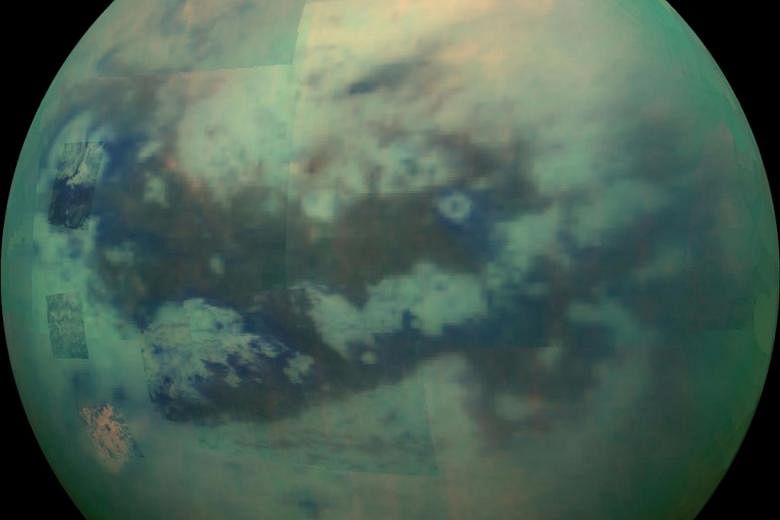WASHINGTON • Saturn's moon Titan has been called the most Earth-like world found to date.
It is the only other place in the Solar System where stable liquid sits on the surface - seas of liquid methane flow into channels that have created magnificent canyons - and scientists have suggested that the icy world might be able to support some kind of alien life.
Now researchers think they can add yet another "Earth-like" quality to Titan's extensive list: According to a study in Geophysical Research Letters, a seemingly impossible cloud on Titan may be created by weather processes we have seen before at home.
The unlikely cloud type was first spotted decades ago by American space agency Nasa's Voyager 1 spacecraft. It was made of a carbon- and nitrogen-based compound called dicyanoacetylene (C4N2). C4N2 is part of the chemical cocktail that cloaks Titan in an orange-coloured haze.
Clouds are not unusual on Titan - they form when methane cools and condenses, just as clouds made of water form on Earth. Things are a little different when they form in the stratosphere but, in both cases, the clouds form when ice and vapour reach a state of equilibrium.
In the case of these strange ice clouds on Titan, the amount of dicyanoacetylene vapour present in the area should not be enough to keep the ice trapped in the cloud in equilibrium.
Scientists at Nasa's Goddard Space Flight Centre think they have found an answer - in the clouds that damage Earth's ozone layer.
Earth has certain clouds that forgo condensation altogether, forming instead through a kind of "solid-state" chemistry based on the interactions of ice particles.
On Titan, a similar process could create the mysterious ice clouds: Nasa suggests that cyanoacetylene, a more common compound containing hydrogen, carbon and nitrogen, could become coated with hydrogen cyanide as it moved down the stratosphere in the form of icy crystals. If ultraviolet rays from the sun struck one of these dual-layer ice crystals, the resulting chemical reaction would release dicyanoacetylene and hydrogen.
WASHINGTON POST

